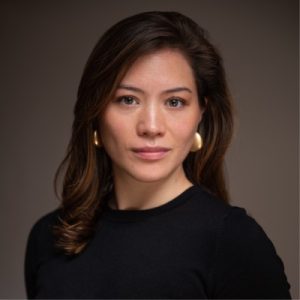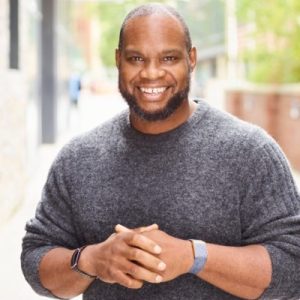A new report launched this month at Unbound, an event and movement from recruitment firm La Fosse, has revealed the tech industry is still failing women—half of whom leave the sector by the age of 35.
The Women at Work Blueprint, based on insights from over 1,700 women in tech, underscores how outdated systems and biased practices are driving experienced, talented professionals out of the industry.
But unlike many such reports, this one came to life in a room full of ambition, honesty, and a shared determination to do better.
Held in London on the rooftop of a private members club in London’s Covent Garden, Unbound brought together tech leaders, recruiters, and change-makers to go beyond the data and discuss real-world actions.
The event marked the start of what La Fosse describes as “a bold new initiative to challenge the persistent gender imbalance in tech.” And alongside the sobering statistics were voices of experience—from women who’ve broken into the sector, and from male leaders reckoning with how they’ve contributed to or can disrupt the status quo.
More than a report
“Unbound isn’t about more talk—it’s about action,” said Justine Paech of La Fosse’s Change and Transformation team, who hosted the event. “If you care about driving real change in our industry, come and be part of it. Your voice matters, and it deserves to be heard.”
The initiative aims to ensure 50% of tech leadership roles are held by women by 2030. Its approach? Deliver practical career pathways—not platitudes—and build a collaborative community driving long-term change.
The evening’s panel dived into how hiring managers, leaders and allies can dismantle long-standing systemic barriers.
Among those sharing insights was Sabina Heywood, a defence tech specialist at Anduril and a former military intelligence officer who transitioned into tech after an early career in classical music.
“Women’s strengths lurk in the dark”
Heywood, one of few women in her sector, shared how she had to adapt her identity to survive in male-dominated environments.
“I was told to speak louder, lower my voice, dress differently—be more like a man,” she said. “At one point, I wore all black, even had a black water bottle. You couldn’t tell anything about my personality.”
She now rejects that notion. “Our superpower is emotional intelligence. Women often lock eyes across a room and understand what’s going on. We’re able to translate strategy, mediate conflict, and build relationships. That soft power? It’s critical to effective leadership.”

La Fosse report: Sabina Heywood: “Emotional intelligence is our best defence”
Heywood added that women can and do negotiate successfully—once they’re empowered to do so. “The women I’ve worked with, once they’ve cracked it, they’re getting significantly better salaries.”
Allyship: an awareness gap
A notable theme from the report and the event was male allyship—or the gap between perception and impact. While 77% of men identify as “active allies,” only 40% of women agree.
“It’s an education gap,” said La Fosse COO Glynn Blaize, who spoke candidly about confronting his own blind spots. “Being an ally means being able to sit with discomfort. If someone gets talked over in a meeting, acknowledge it. Reflect on it.”
He shared an experience from a previous company where he was tasked with presenting gender pay gap data—only to realise he’d unknowingly presided over a deeply inequitable system. “Being faced with the data was unbelievably embarrassing. I thought we had parity. We didn’t.”

La Fosse COO Glyn Blaize: “Male allyship can mean facing some uncomfortable truths.”
The report found men were more likely to push for higher salaries, while women—faced with cost-saving pressures and unsupportive systems—felt less empowered to do so. “We became the thing we didn’t want to become,” Blaize said. “So we had to change how we were hiring, interviewing, and promoting.”
John Musk, product director at Haven Group, recalled a moment when a trainer made a sexist joke about a female colleague being “hard to manage.” “I got a cold sinking feeling. I didn’t laugh. I went home and couldn’t stop thinking about it. Eventually, I called him out.”
It was, he said, the first time in 30 years another man had held him accountable.
A blueprint for retention
La Fosse Academy director Claudia Cohen noted that many of these issues begin early, with what she calls the “experience paradox”—junior roles requiring two years’ experience, cutting out many career-changers and returners.
“That requirement disproportionately affects women,” she said. “We look at aptitude and potential, not background.”
Since its launch, 45% of Academy placements have been women, many from non-traditional paths. Cohen stressed that inclusion isn’t just ethical—it’s strategic: “In product teams, in engineering, in leadership—gender diversity affects performance, usability, and profitability.”
The Women at Work Blueprint report also stressed that women leave tech not due to lack of ambition, but because the system wasn’t built for their success. Mid-career stagnation, biased evaluations, and lack of sponsorship still plague the industry.
“Working mothers are twice as likely to downshift or leave if flexibility isn’t offered,” the report found. “That’s not a pipeline issue—it’s outdated infrastructure.”
The solution? Life-stage-specific policies: returnships, flexible work, and targeted sponsorships that reflect the varying needs of women at different career points.
Why it’s worth It
Despite the challenges, there was a strong sense of optimism at the event, which featured a healthy number of male attendees.
BAE Systems: transferable skills in cyber
When TI asked Heywood what she enjoys most about her work, the defence exec lit up. “Tech moves fast. I know I’m working with the best people solving some of the world’s most complex problems,” she said. “I love working with the robots we build—the most advanced drone systems in the world. I’ve built them with my own hands. And I have to get it right, because what we do has real-world consequences.”
But beyond the hardware, it’s the purpose that drives her. “This is Tech for Good. I’m part of building something that matters.”
Additional reporting by Ann-Marie Corvin